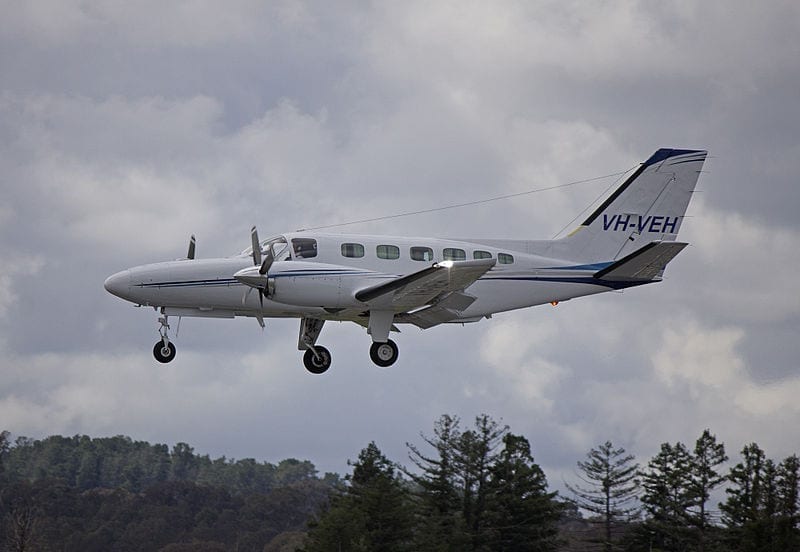
The safety window – Raytheon Premier accident analysis
Accident ReportSynopsis
It is midday on Thursday 12 March 2015. A Premier I business jet is descending to its destination, Blackpool (EGNH), UK. The aircraft experiences intermittent hydraulic pressure fluctuations with associated indications and warnings.…

Accident report: losing control at 43,000 feet
Accident ReportNearing its cruising altitude of 43,000 feet (FL430), the aircraft suddenly stalled and departed controlled flight in a series of five rapid 360-degree rolls to the right. The pilot briefly regained control before the aircraft stalled a second time. The aircraft’s wings were structurally damaged as excessive g-force was applied during the recovery from this second stall.

Accident report roundup: time in type
Accident Reportin spite of the well-meaning advice, total time is still the measuring stick for pilots. A pilot with thousands of hours is assumed to be safe, and both his insurance premium and his reputation around the airport will probably reflect that assumption. But read through NTSB accident reports and you’ll quickly notice another measure of pilot proficiency is more important: time in type.

Accident report roundup: controlled flight into wires
Accident ReportMany pilots worry about colliding with another airplane in flight, but not nearly as many worry about power lines. According to FAA numbers, that's a mistake. There are roughly 75 accidents every year involving wires and while many of them involve helicopters, not all of them do. As the three accidents below show, airplane pilots regularly find ways to turn a fun flight into a fatal mistake.

Accident report roundup: three Cirrus stall scenarios offer important lessons
Accident ReportThree fatal Cirrus accidents in late 2015 and early 2016 caught my attention, since all three involved low-level stalls. Two occurred with flight instructors on board and one with an experienced Cirrus pilot at the controls. Each one has lessons for us as we try to reduce loss of control accidents. Consider each scenario, and think about how you would react.

Accident report – what would you do differently?
Accident ReportThis article is the first in a regular series where we will examine accident reports. But we hope to do something different here at Air Facts. Instead of just proclaiming Pilot Error and assuming "it couldn't happen to me," we hope to use the NTSB reports to become safer pilots. The question we'll pose each time is: "what will I change about my flying after reading this report?"

Accident report: aviate, navigate, communicate
Accident ReportThe phrase is so overused that it's become a cliche: aviate, navigate, communicate. The clear suggestion is that flying the airplane is much more important than messing with the GPS or telling Air Traffic Control about your problems. But while all pilots hear this advice from day one of flight training, the accident record shows that it's hard to do when something goes wrong.

Accident report: failure to climb
Accident ReportIt sounds so simple: full power, pitch up and climb. What could possibly go wrong on takeoff, assuming the engine keeps running? The truth is, an awful lot, as a Cirrus accident from 2013 makes clear. We are at our most vulnerable just after takeoff, with little altitude or airspeed but lots to do in the cockpit. Throw in bad weather or dark skies and things can get overwhelming in a hurry.

Accident report: learning to say no
Accident ReportThe checkride is a time of transition, when new pilots go from the clearly defined instructor-student relationship to the much fuzzier examiner-applicant relationship. Who's in charge? The simple answer is the applicant, but an accident from late 2013 shows how tricky this question can be in real life.

The error chain in action: Pilatus crash at Butte
Accident ReportAccording to Hemingway, a man goes bankrupt gradually, then suddenly. The same could be said of the way pilots crash airplanes: a series of small mistakes slowly build up until a final mistake suddenly ends the flight. A 2009 Pilatus PC-12 accident in Montana is a tragic example.

Trust but verify: ATC can’t fly the airplane for you
Accident ReportMany pilots get complacent when they're in ATC's warm embrace, assuming that terrain, weather and traffic concerns are being handled by the person in a dark room. But a chilling accident report from 2010 offers an important reminder that controllers can make mistakes.
